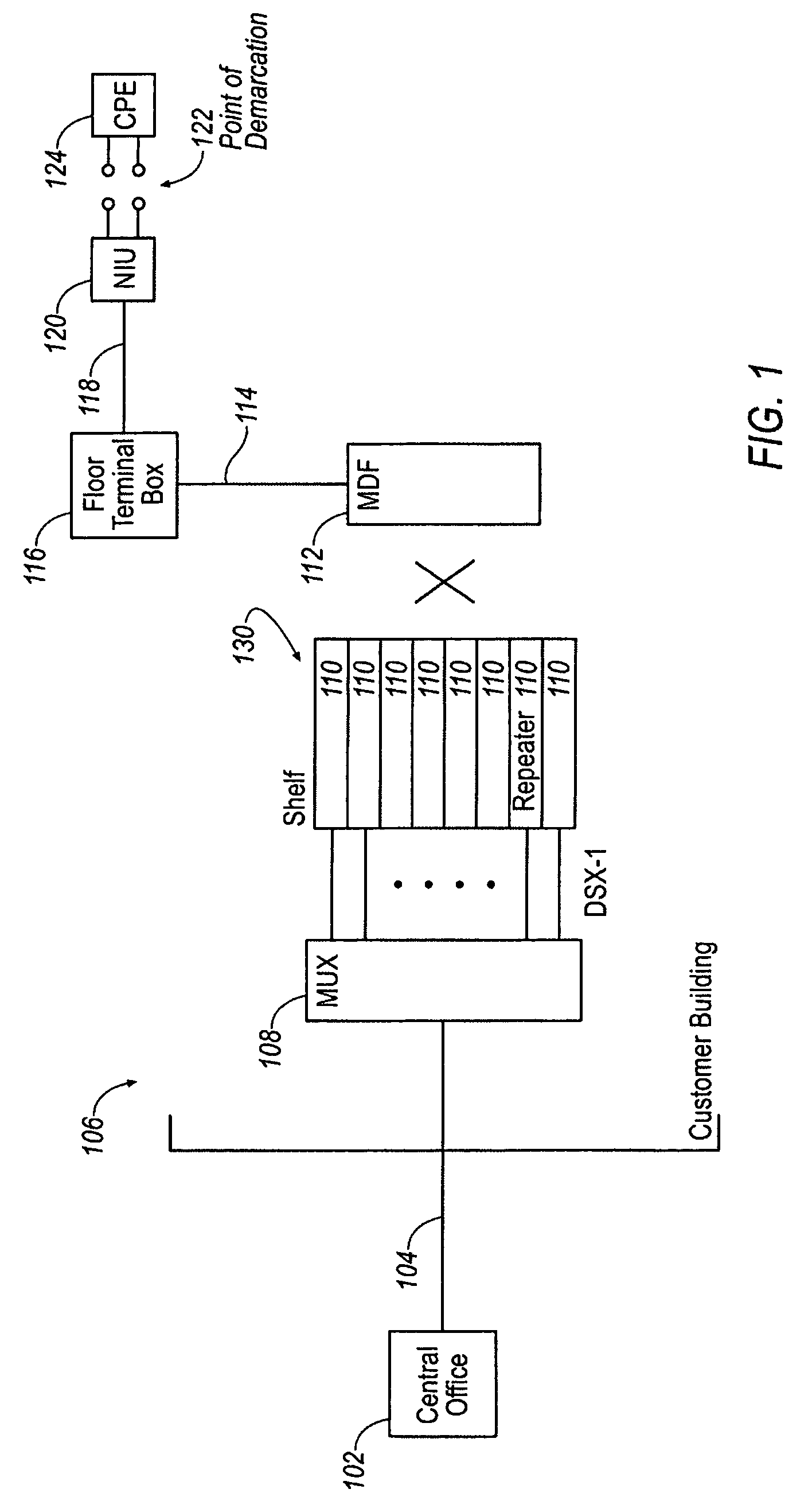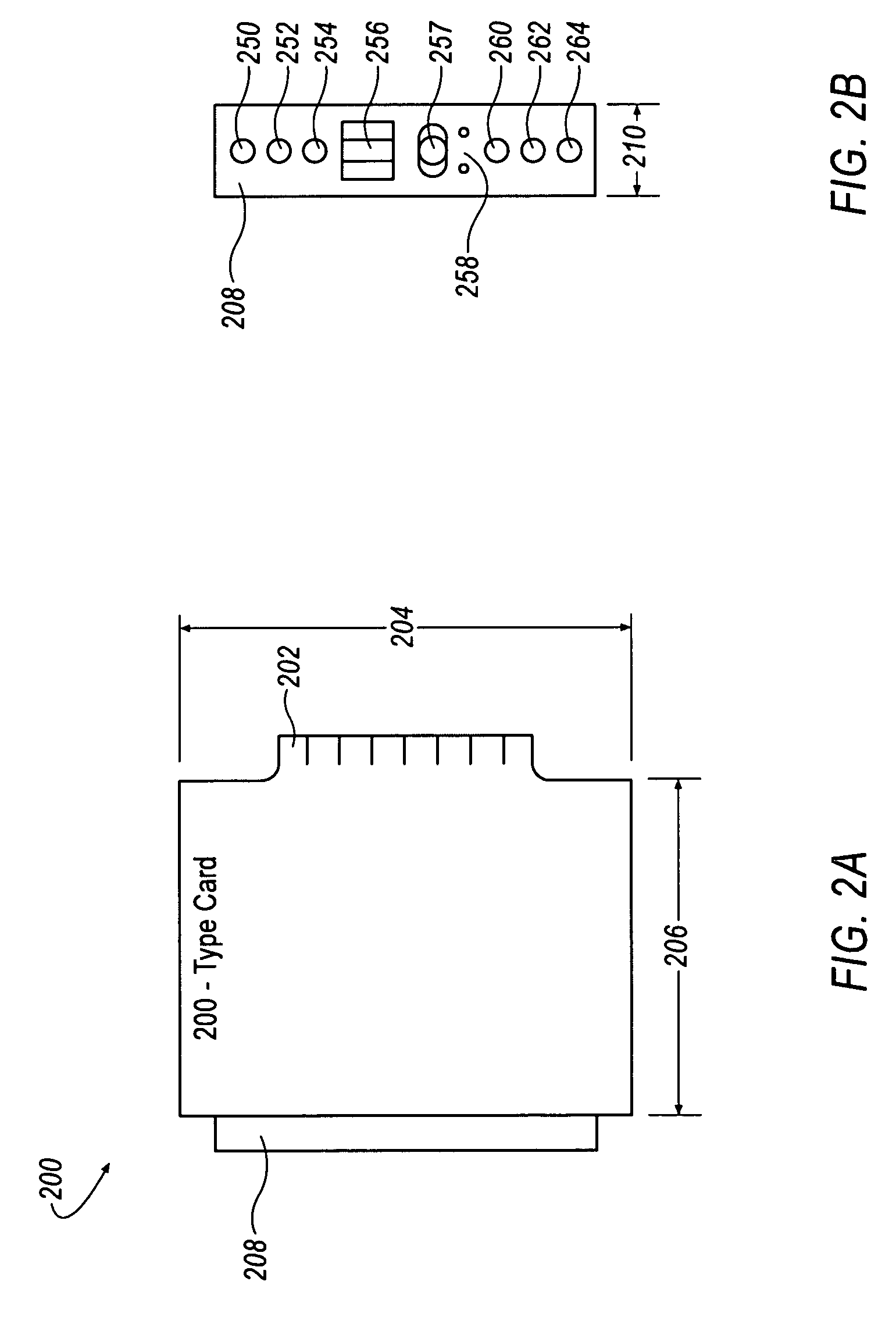Terminal extension repeater
a repeater and terminal technology, applied in the field of digital transmission networks, can solve the problems of insufficient operation in the new environment at or near a customer's building, inability to provide simultaneous signal regeneration in both directions, and failure of prior art extension repeaters, so as to achieve economic and simplified installation
- Summary
- Abstract
- Description
- Claims
- Application Information
AI Technical Summary
Benefits of technology
Problems solved by technology
Method used
Image
Examples
Embodiment Construction
[0022]FIG. 1 illustrates an exemplary environment for certain embodiments of extension repeaters according to the present invention. Transmission of signals from the central office 102 to a customer destination 106 is accomplished over digital line facilities 104. As indicated earlier, these facilities 104 support bi-directional communication and therefore, in practice, transmission of signals from the customer destination 106 to the central office 102 is also accomplished over the facilities 104. These facilities may provide large numbers of telephone lines to high volume customers. Increasingly, these relatively high speed facilities are used to provide dedicated Internet connectivity to the customer's destination 106, to provide wide area intranetwork links, or to provide data intensive services such as video or multimedia services. Throughout the remainder of the present description, the network facilities are assumed to be bi-directional even if not explicitly identified as suc...
PUM
 Login to View More
Login to View More Abstract
Description
Claims
Application Information
 Login to View More
Login to View More - R&D
- Intellectual Property
- Life Sciences
- Materials
- Tech Scout
- Unparalleled Data Quality
- Higher Quality Content
- 60% Fewer Hallucinations
Browse by: Latest US Patents, China's latest patents, Technical Efficacy Thesaurus, Application Domain, Technology Topic, Popular Technical Reports.
© 2025 PatSnap. All rights reserved.Legal|Privacy policy|Modern Slavery Act Transparency Statement|Sitemap|About US| Contact US: help@patsnap.com



